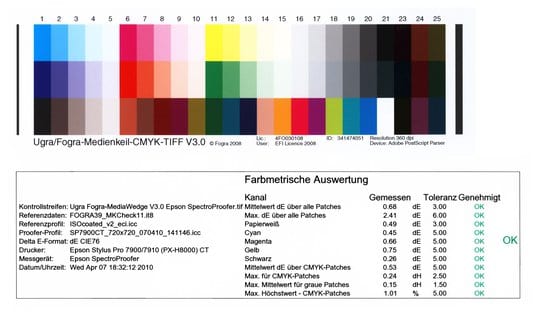Embed fonts, convert them into paths or rasterize them?
To ensure secure data exchange between customers and proofing service providers, fonts must be embedded, converted into paths or rasterized. This ensures that it is and remains exactly the same font and exactly the same style. How do I do that? With InDesign and QuarkXPress, you select the PDF/X-3 standard when exporting data. For Illustrator and Freehand, select the font and select “Convert font to paths” from the menu. In Photoshop, select the text layer, right-click on it and select “Rasterize Text”.

